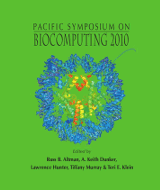Estimation of Protein and Domain Interactions in the Switching Motility System of Myxococcus xanthus
Faruck Morcos1, Marcin Sikora2, Mark Alber3, Dale Kaiser4, Jesus A. Izaguirre1
1 Department of Computer Science & Engineering, 2Department of Electrical Engineering, 3 Department of Mathematics, University of Notre Dame, Notre Dame, IN 46556, USA; 4 Departments of Biochemistry and Developmental Biology, Stanford University, Stanford, CA
Email: amorcosg@nd.edu, msikora@ieee.org, malber@nd.edu, izaguirr@nd.edu, adkaiser@stanford.edu
Pacific Symposium on Biocomputing 15:157-165(2010)

Abstract
The gram-negative myxobacterium Myxococcus xanthus is equipped with an interesting motility system that allows it to reverse direction on average every 8 minutes by switching the construction of two motility engines at the ends of this rod-shaped bacterium. While the mechanisms responsible for timing and engine construction/deconstruction are relatively well understood, there are several competing hypotheses as to how they are coupled together. In this paper we examine the evidence for protein interactions underlying these possible couplings using a novel framework consisting of a probabilistic model describing protein and domain interactions and a belief propagation inference algorithm. When provided with large amount of indirect pieces of information, such as high-throughput experiment results, and protein structures, we can reliably determine the relative likelihoods of these hypotheses, even though each individual piece of evidence by itself has very limited reliability. The same framework can be used to map large protein and domain interaction networks in myxobacteria and other organisms.
[Full-Text PDF] [PSB Home Page]